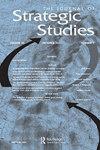Nuclear Signalling and Escalation Risk in the India-Pakistan Context: A Critical Overview of the 2001-02 Standoff
IF 2
2区 社会学
Q2 INTERNATIONAL RELATIONS
引用次数: 0
Abstract
A terrorist attack on the Indian parliament on 13 December, 2001 resulted in a ten-month long military stand-off between India and Pakistan. Throughout this period, both sides conducted aggressive and provocative signalling by conducting missile tests, and through bellicose speeches, statements and press briefings. These signals were conveyed at various levels by the political, military, and bureaucratic leadership. This paper provides a theoretical framework about signalling, deterrence stability and the escalation risk grounded in the classical understanding on nuclear deterrence and escalation. The paper analyses the nuclear signalling during the stand-off in light of the theoretical framework. The paper tests the hypothesis that a high percentage of indirect signalling would induce instability into a nuclear crisis, and the large number of actors sending signals from either side would increase the likelihood of miscommunication. By sifting through media reports during the stand-off, an elimination exercise was conducted and 72 signals were identified and analysed. The paper is divided into five sections and points to the limitation of the Cold War model to explain the South Asian strategic stability dynamics and the need to work out a model specific to South Asian strategic dynamics.印巴背景下的核信号和升级风险:2001-02年对峙的关键概述
2001年12月13日,恐怖分子袭击了印度议会,导致印度和巴基斯坦之间长达10个月的军事对峙。在此期间,双方通过进行导弹试验和发表挑衅性的讲话、声明和新闻发布会,发出了侵略性和挑衅性的信号。这些信号由政治、军事和官僚领导层在各级传达。本文在对核威慑和核威慑升级的经典理解的基础上,提出了核威慑信号、核威慑稳定性和核威慑升级风险的理论框架。本文从理论框架出发,对对峙过程中的核信号进行了分析。这篇论文测试了一个假设,即高比例的间接信号将导致核危机的不稳定,而从任何一方发出信号的大量参与者都将增加沟通不端的可能性。通过筛选对峙期间的媒体报道,进行了一次排除演习,并确定和分析了72个信号。本文分为五个部分,指出冷战模型在解释南亚战略稳定动态方面的局限性,以及制定南亚战略动态特定模型的必要性。
本文章由计算机程序翻译,如有差异,请以英文原文为准。
求助全文
约1分钟内获得全文
求助全文
来源期刊

Journal of Strategic Studies
Multiple-
CiteScore
4.00
自引率
5.30%
发文量
40
期刊介绍:
The defining feature of The Journal of Strategic Studies is its commitment to multi-disciplinary approach. The editors welcome articles that challenge our historical understanding of man"s efforts to achieve political ends through the application of military and diplomatic means; articles on contemporary security and theoretical controversies of enduring value; and of course articles that explicitly combine the historical and theoretical approaches to the study of modern warfare, defence policy and modern strategy. In addition to a well-established review section, The Journal of Strategic Studies offers its diverse readership a wide range of "special issues" and "special sections".
 求助内容:
求助内容: 应助结果提醒方式:
应助结果提醒方式:


